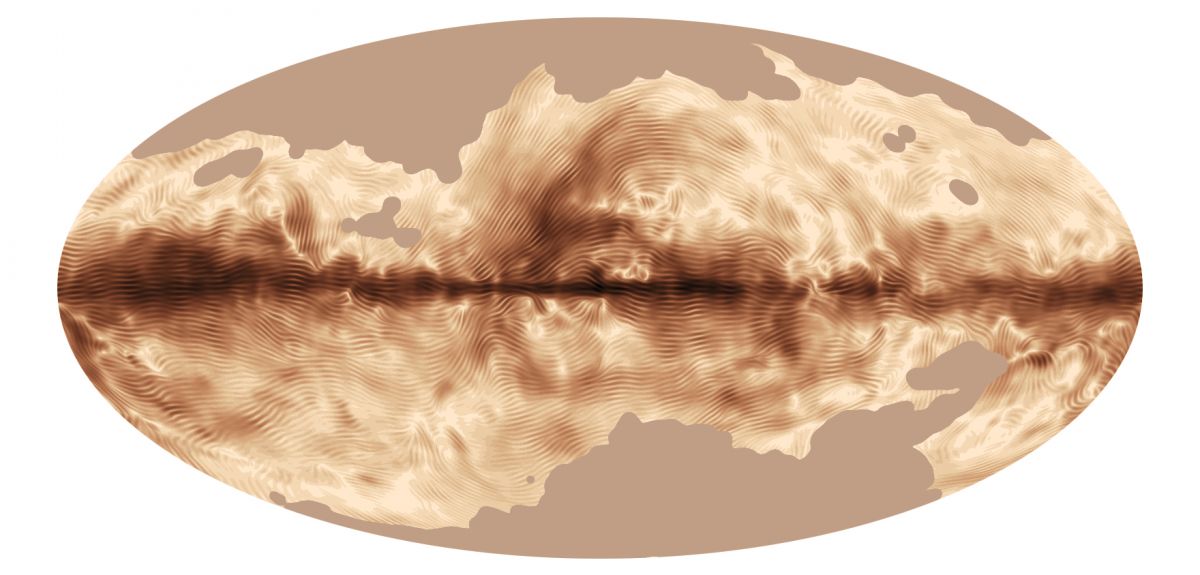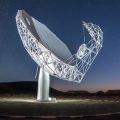
Untangling Milky Way's magnetic personality
Data from ESA's Planck satellite promises to help us gaze back in time at what the Universe looked like just after the Big Bang.
But between this snapshot of 'ancient light' from the newborn Universe, preserved as an imprint in the Cosmic Microwave Background (CMB), and us lies the foreground of our own Milky Way, which is full of gas and dust that also emits light.
So to test theories about the rapid expansion (inflation) of our Universe, and maybe even spy the primordial gravitational waves - ripples in space time - that should accompany it, we first have to chart our own dusty neighbourhood.
A new map using data from Planck, produced by a collaboration including Oxford scientists, is helping us to do just that. As Joanna Dunkley from Oxford University's Department of Physics explains, it's revealing a lot about the magnetic personality of our galaxy…
OxSciBlog How can light tell us about magnetic fields?
Joanna Dunkley: We don't get to see the magnetic fields directly, but they do affect light that gets sent out by stuff that sits in the magnetic field. In our Galaxy that 'stuff' is mainly relativistic electrons and tiny dust grains.
For the electrons, they emit light while spiralling around magnetic fields. For elongated grains of dust, they prefer to line up with their long side at right-angles to any magnetic field. They are heated up by star-light, and release their heat as infrared light. This comes out preferentially along their long side. So the orientation, or polarisation, of the light, tells you how the dust grains are aligned, which in turn tells you what direction - and how strong - the magnetic field is.
OSB: Why is studying our galaxy’s magnetic field so hard?
JD: There are still huge questions about what our galaxy's magnetic field is. The problem is that we are sitting in our Galaxy, and have to try and construct a 3-dimensional view of the field, but we can only look from here on Earth. We can't get outside the Galaxy to look at the whole thing from different angles.
Parts of the magnetic field are neatly ordered, so in some directions we can see a long way through the Galaxy, but much of it is messy and tangled, and the information in the orientation of the light coming from the dust grains, or the electrons, gets very hard to interpret.
OSB: What does light data reveal about patterns in our galaxy's magnetic field?
JD: The orientation of vibration - or polarisation - of the light tells us what direction the magnetic field lies in. This new map from Planck measures the polarisation of light from dust grains and shows us that the magnetic field is aligned with the disk of the galaxy. It also shows that in some nearby clouds of dust and gas, the field is disorganised, with less ordered polarisation directions.
OSB: How could this data help in the hunt for gravitational waves?
JD: Gravitational waves from inflation also polarize light in the microwave to infrared wavelengths. That light comes from the Big Bang, but we have to separate out the Big Bang-light from the Galaxy-light. Happily the two signals vary differently with wavelength, so if you have maps of the sky at different wavelengths - which Planck does - you can better pull out the tiny signal from the Big Bang. This is something I work on at Oxford with my post-docs, and have developed statistical methods for separating the different signals.
OSB: What are the next big challenges for the Planck team?
JD: One challenge is to delve further into these polarization maps and help test whether the gravitational wave signal recently claimed by the BICEP2 team is really there. We are also currently finishing our second cosmological analysis of the Planck data - using the full set of data taken by the satellite - with results due out later this year.
 MeerKAT is shape of things to come
MeerKAT is shape of things to come How short is your time?
How short is your time? Tamiflu: an analysis of all the data
Tamiflu: an analysis of all the data Why males stray more than females
Why males stray more than females Sex, skinks, and personality
Sex, skinks, and personality